RREC PROJECTS ON THE HIGH ROAD
TO COMPLETION
Even as the grip of the pandemic on human lives and businesses loosens, the disruptions it has caused over the past couple of years is still being felt. Life, however, must go on and projects across L&T Construction are concertedly getting their acts in place to push for delivery and make up for lost time and ground. The two RREC projects featured here have not only survived the pandemic but also held their own and are now on the high road to completion
and handover.
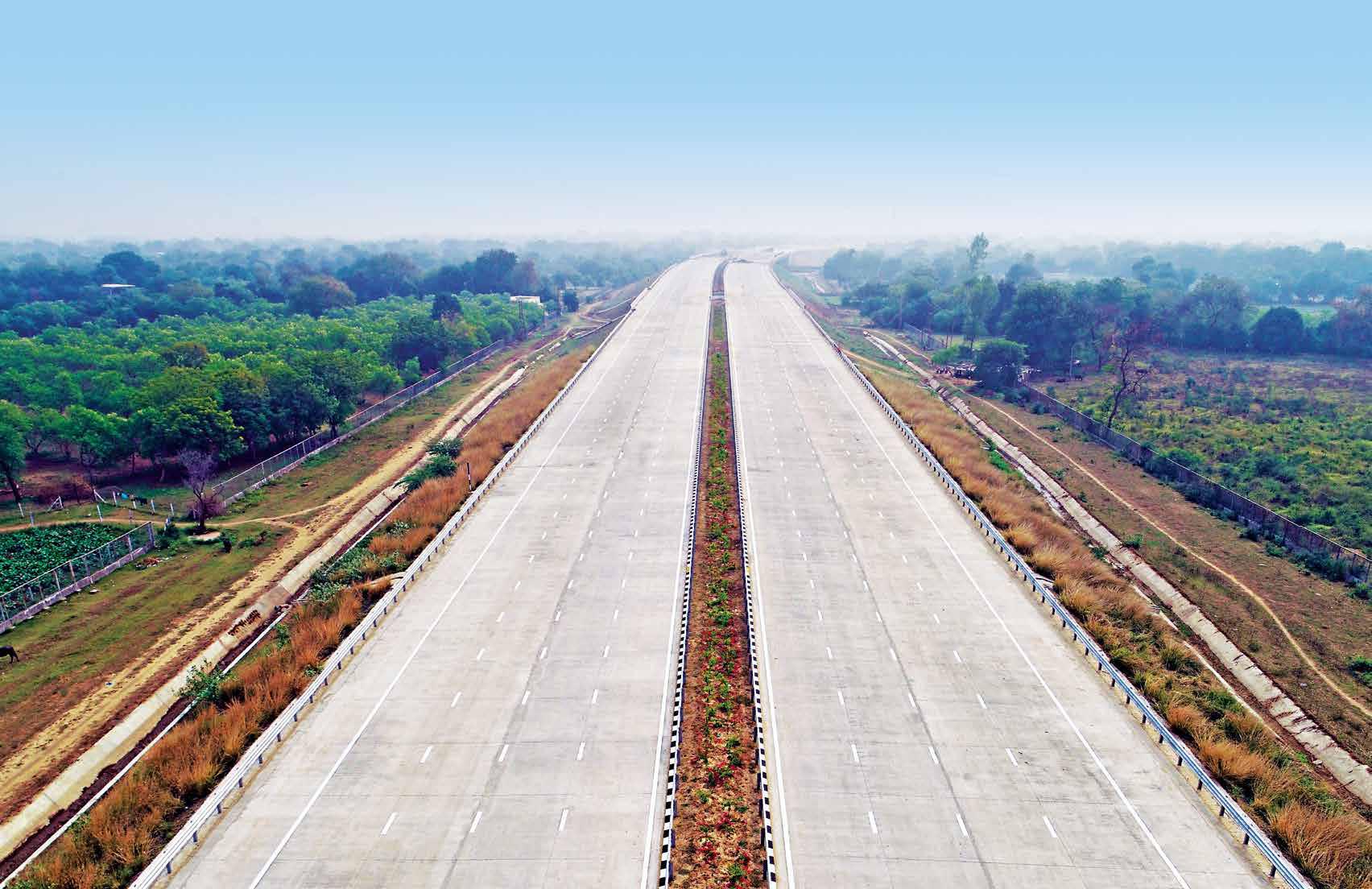
MUMBAI–VADODARA EXPRESSWAY: TARGETING A MARCH-END CLOSURE
With 95% of the project completed, Project Manager Kamal Kishor Singh is focusing on putting the final touches to hand over the Mumbai–Vadodara Green Field Expressway project by 31st March 2022. “Of course, we had our fair share of challenges we had to contend with,” he shrugs, sounding practical. “Top of the list was the pandemic and the resultant non-availability of labor for the voluminous structural concrete work involved in our project. Then there was the issue of utility shifting that is normally a big headache in road projects; mining approvals especially in Gujarat for Borrow Soil, a major component (volume-wise) for road projects, were a lengthy and timeconsuming process; and finally, being a greenfield project, we had several logistic challenges.”
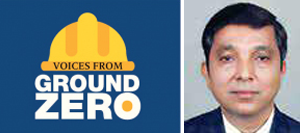
“Our initial strategy was to maintain a healthy cash for our project and work was taken up accordingly in areas where invoicing was favorable to us without hampering the overall project schedule. At the same time, we never lost sight of customer collections from day one, which is why we have been able to always maintain a positive cash flow and a negative working capital throughout the project lifecycle.”
Kamal Kishor Singh
Project Manager,
Mumbai-Vadodara Expressway
To address the manpower issue, the team continuously followed up with and coaxed labor agencies to bring in manpower, wherever available from across the country. Similarly, the team regularly interfaced and chased local utility-owning authorities for approvals for the utility shifting works. A dedicated team, led by Planning Manager Shashikanta Tripathy, along with another team from the CGM Office at Ahmedabad strove to procure the requisite mining approvals for Borrow Soil.
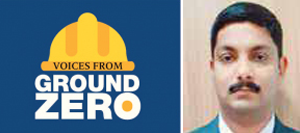
“Being prepared is half the battle. We planned for our resources in advance, diligently monitoring progress and paying attention to and resolving all critical requirements during execution.”
Shashikanta Tripathy
Planning Manager,
Mumbai-Vadodara Expressway
PLANNING THEIR WAY FORWARD
“Being prepared is half the battle won,” quips Shashikanta, who observes that the team made advance plans to get quick approvals on their design and drawings from the client and external authorities like the Railways. We planned for our resources in advance, diligently monitoring progress and paying attention to and resolving all critical requirements during execution.”
“Our initial strategy was to maintain a healthy cash for our project,” remarks Kamal, “and work was taken up accordingly in areas where invoicing was favorable to us without hampering the overall project schedule. At the same time, we never lost sight of customer collections from day one, which is why we have been able to always maintain a positive cash flow and a negative working capital throughout the project lifecycle.” Kamal looks understandably proud of his team’s achievement. Smart procurement planning and order finalization for special items like shutters for precast items, prestressing materials, expansion joints, bridge bearings, and other critical items went a long way to reduce lag in execution and maintain efficiencies.
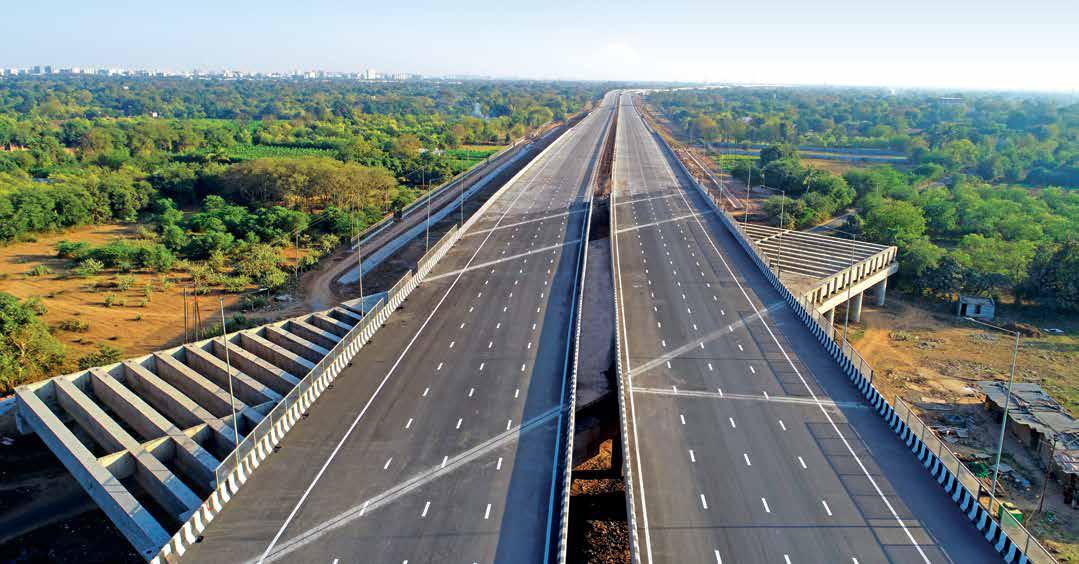
MAINTAINING HIGH STANDARDS OF SAFETY & QUALITY
The project features 107 structures, and being a greenfield project, most of these structures are above ground level involving working at heights. “We had to erect 1,340 precast girders at more than 20 m heights,” points out EHS In-charge Guru Prasad, “all of which was carried out taking the utmost care with specially identified workmen who were tested and trained before being allowed to work at such heights.”
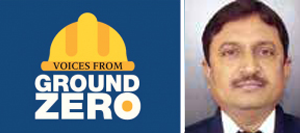
“We ensured efficient P&M to produce the PQC mix but the major challenges arose while laying in a continuous flow such as variations in the temperature of mix, the transportation of mix, etc. ”
Prakash Raghunath Pawar
P&M In-charge,
Mumbai-Vadodara Expressway
Working next to ‘live’ traffic is a perennial hazard for road projects, and the team had to execute two interchange crossings over the existing NH8 (Delhi–Mumbai corridor) and NE1 (Ahmedabad–Vadodara Expressway) beside busy traffic. “Traffic management was a challenge,” says Guru, “but our EHS team worked in coordination with the NHAI to make all safety arrangements in accordance with IRC provisions, deploying round the-clock safety vigilantes at these interchanges. We have completed these sections with zero accidents,” declares a pleased Guru. Other EHS best practices followed at site include EHS walkdowns, awareness programmes on various works, daily pep
talks, and more.
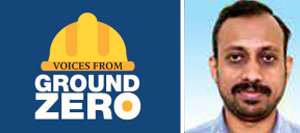
“We had to erect 1,340 precast girders at more than 20 m heights all of which was carried out taking the utmost care with specially identified workmen who were tested and trained before being allowed to work at such heights.”
Guru Prasad
EHS In-charge,
Mumbai-Vadodara Expressway
Executing concrete pavements demands precision, as any lapses beginning with production to laying can have an adverse impact on product quality. “We ensured efficient P&M to produce the PQC mix,” remarks P&M In-charge Prakash Raghunath Pawar, “but the major challenges arose while laying in a continuous flow such as variations in the temperature of mix, the transportation of mix, etc.” Due to the restriction of paving width, the team had to pave the 4-lane stretch in two sequences, which could have affected its ride quality. Quality In-charge Verddhman Verma picks up the story. “To overcome these issues, we planned to pave the PQC mostly during the night and implemented the Fixed Side Shutter during the first sequence when laying the PQC to level the edge with the joint, and it proved successful,” he smiles. “We had a dedicated QA/QC team for the night to check and approve before commencement of execution.”
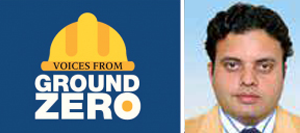
“We planned to pave the PQC mostly during the night and implemented the Fixed Side Shutter during the first sequence when laying the PQC to level the edge with the joint, and it proved successful.”
Verddhman Verma
Quality In-charge,
Mumbai-Vadodara Expressway
DIGITALIZATION DRIVES EFFICIENCY
The Asset Insight digital solution monitors asset utilization while sensors fitted to all critical machines monitor fuel level differences and the use of RTR for each activity by site engineers.
PEOPLE MATTER
“Apart from maintaining round-theclock operations at site, we invited suggestions from the execution team and acted on them to improve execution speed, switching execution staff according to the specific needs where special focus was required,” informs Kamal. Manpower management was a critical task for the team as the labor force required for such a voluminous project is huge. ‘Target-based incentives’ and the rigor of mobilization by the labor agencies have been holding the project in good stead.

SIGNIFICANT MILESTONES ACHIEVED
Despite delays in land availability, the team went ahead with the work, planning to achieve their milestones as planned. “We have achieved all our three crucial milestones within the due dates and have applied for PCOD even before the schedule completion,” shares a proud Kamal. Another feather in the project’s cap is the successful completion of an ROB in all respects over one of the busiest routes, the Delhi–Mumbai route of Western Railway, substantially ahead of the date of completion. Verddhman proudly adds that his project won the Quality Trophy for 2021.
EDFC CP 303: THE FINAL COUNTDOWN TO COMPLETION
Project Manager Vikram Kohli’s EDFC CP 303 project is a part of the 1,839 km new Eastern Dedicated Freight Corridor railway line between Ludhiana, Punjab, to Dankuni, West Bengal. His focus is on a 225 km route involving constructing bridges and formation works from chainage 7+820 to 187+0.50, covering 6 districts of Uttar Pradesh: Khurja, Bulandshahr, Hapur, Meerut, Muzaffarnagar, and Saharanpur. The project has survived the COVID waves and a host of other rail blocks, and as Vikram says, “We were supposed to have completed this project in a record timeline of just 40 months; however, several challenges derailed our progress, but we are into our final push to complete by June 2022.”
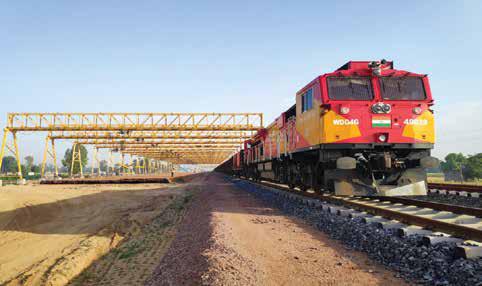

“We were supposed to have completed this project in a record timeline of just 40 months; however, several challenges derailed our progress, but we are into our final push to complete by June 2022.”
Vikram Kohli
Project Manager, EDFC CP 303 Project
In Vikram’s defence, it must be noted that the project runs through one of the most difficult terrains with a cross drainage structure every 300 m and canals running through, all along the alignment. It involves a huge quantum of earthwork and concrete, the execution of which, especially earthwork, is difficult due to agricultural richness all along the alignment.
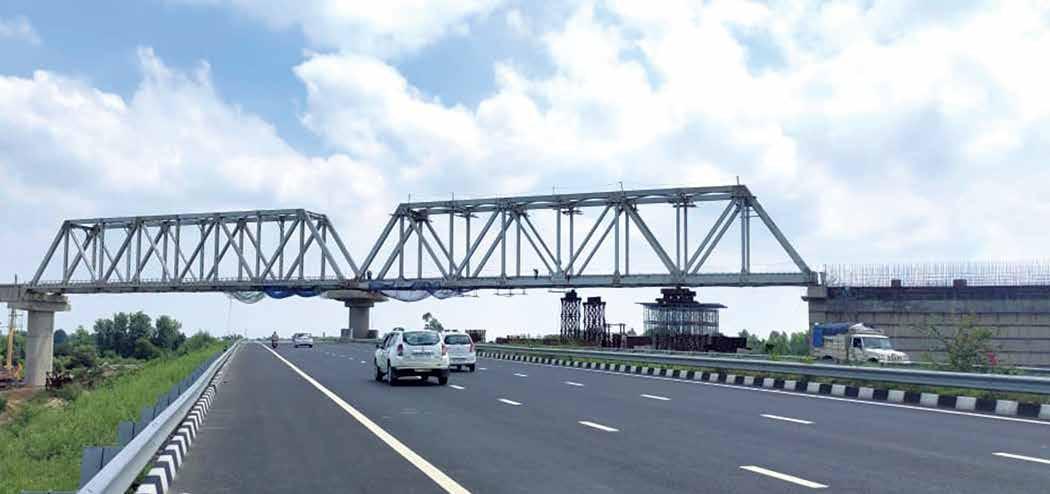
Facing and overcoming these impediments, Vikram’s team has completed 80% of physical work. In theirs pursuit of closure, the project team has achieved some significant value engineering, be it dumping the secondary Ballast supplied directly from the crusher through Bobbyn Hoppers, saving substantial rehandling, or eliminating 21 km of Yard Drain between the existing and future Loop Lines, saving substantially on time and cost.